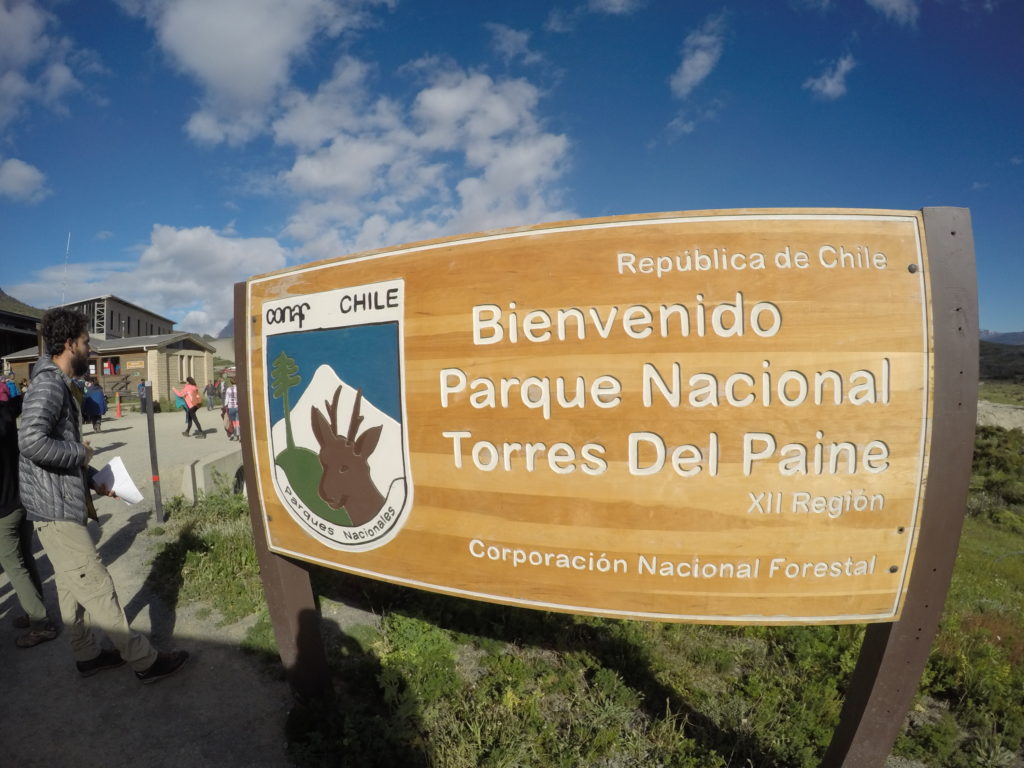
You’re probably reading this blog because you have decided to visit the Torres del Paine National Park. This beautiful park is located in Chile’s Patagonia, the southernmost tip of the South American continent. Visiting the Torres was always on my bucket list and I finally made it at the end 2017.
In the weeks (OK months) leading up to my trip, I spent hours reading weather reports, stalking the Instagram hashtags #torresdelpaine, and talking with others who have already done the Torres del Paine for their best tips and tricks. I put all this information together and mixed in my own personal experience to come up with 5 things you need to know before going to Torres Del Paine.
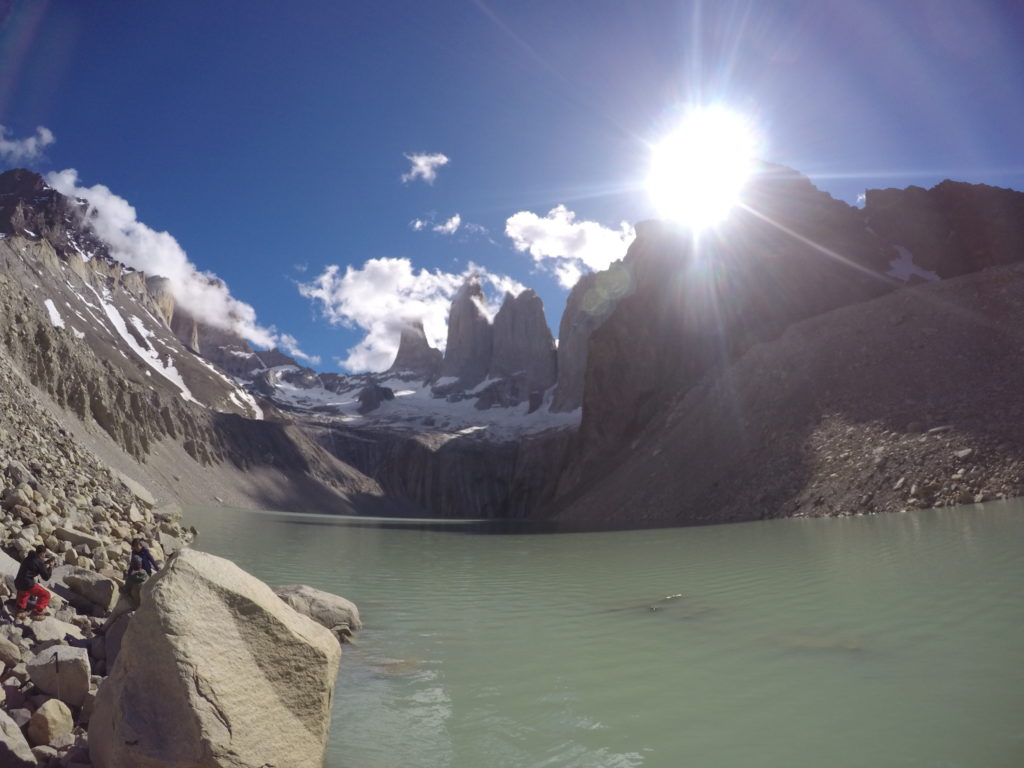
Number 1: When is the best time to go?
Most visitors hit the park between December and February. Torres del Paine can experience four seasons in a day, so bring thermals, sunscreen, hats, and waterproof gear because you never know what can happen. I personally went during the first days of December and had excellent summer sun weather for almost all 3 days and on the last day going to Glacier Grey, the winds were so intense that we couldn’t make it all the way and we had to return back to camp. One week, later a group of friends went and they were hit a snowstorm and it rained so hard that everything got wet. The best site to check weather conditions days before and only believe 70% of what it says.
Number 2: Plan the Number of Days.
It’s really important to plan the number of days you’re going to spend in the park. The shortest and most popular hike that people do is the “W Trek” and will generally need 4 days/3 nights It can be done in 3 days by the hard-core or stretched to 5 days or more if you want to add a rest day or two in the middle. If you’re an experienced hiker, you might consider trying “The O Circuit,” which is a 9-day loop around the entire park that includes the “W.” The length of “W trek” portion is just about 50 miles.
Most people fly into Punta Arenas and then take a 3-hour bus ride to Puerto Natales, the city closest to Torres Del Paine. The first Bus from Punta Arenas-Puerto Natales leaves at 7 am and the last one is at 9 pm
From Puerto Natales, you’re looking at another 3-hour bus ride to the entrance of Torres del Paine National Park. The first bus from Puerto Natales to Torres del Paine leaves at 7 am and the last one goes back to Puerto Natales at 7 pm
There are two entrances to the park; it doesn’t matter if you want to do the “W” or the “O”. They both have the same entrance fee and the only difference is where you personally want to begin your hike. If you enter or leave the park through Lake PEOHUE you must take a catamaran, which leaves every day at starting at 9 AM and the last one at 630 pm. One way will cost you 18.000 CLP or you can buy a round trip for 28.000 CLP.
Number 3: How to make reservations
This part is mandatory to enter the park. Due to overcrowding and its growing popularity, Torres del Paine now requires advance reservations to spend the night in the park. Park entrance fee is 21.000 CLP. I would recommend reserving your camp as soon as you have purchased your airline tickets. It gets a bit tricky because there are a lot of options. You can see the Torres del Paine in one day and so you would just pay the entrance fee. If you want to spend the night, you have three entities that own different sections of the park.
A while back, Torres del Paine used to be private property owned by several families. In the 80’s, all those families have turned in their pieces of land to create the Torres del Paine National Park except for one. That one family runs Fantastico Sur, which currently offers a total 5 campsites and 4 Refugios, which are hostels with bunkrooms and hot showers. Prices start at 10.000 CLP for camping if you want to take your own gear and food or pay up 54.000 CLP and they take care of all that for you. Click here to make your reservations.
Then you have to make separate reservations with the park concessioner Vertice for its 4 campsites and 3 refugios. At the time of this post and during my visit, they were revamping their website so it was required to send them an email for a request to stay at their campsites and Refugio. Check it out here for updates and instructions on how to make reservations.
Then you have CONAF, which is the government national park service, which provides free campsites. Spots are released for the season and are limited. I personally wouldn’t recommend this because when I visited their campsite; I found it to be in poor conditions. If you insist on doing Torres del Paine on a budget, then click here for more info on availability. You can only reserve one night at a time with only 6 months in advance.
Supposedly, they are working together to create a platform where you can make all your reservations from just one website. As soon as I get that information, I’ll update this post and explain the process. But for now, this is the way you must do it.
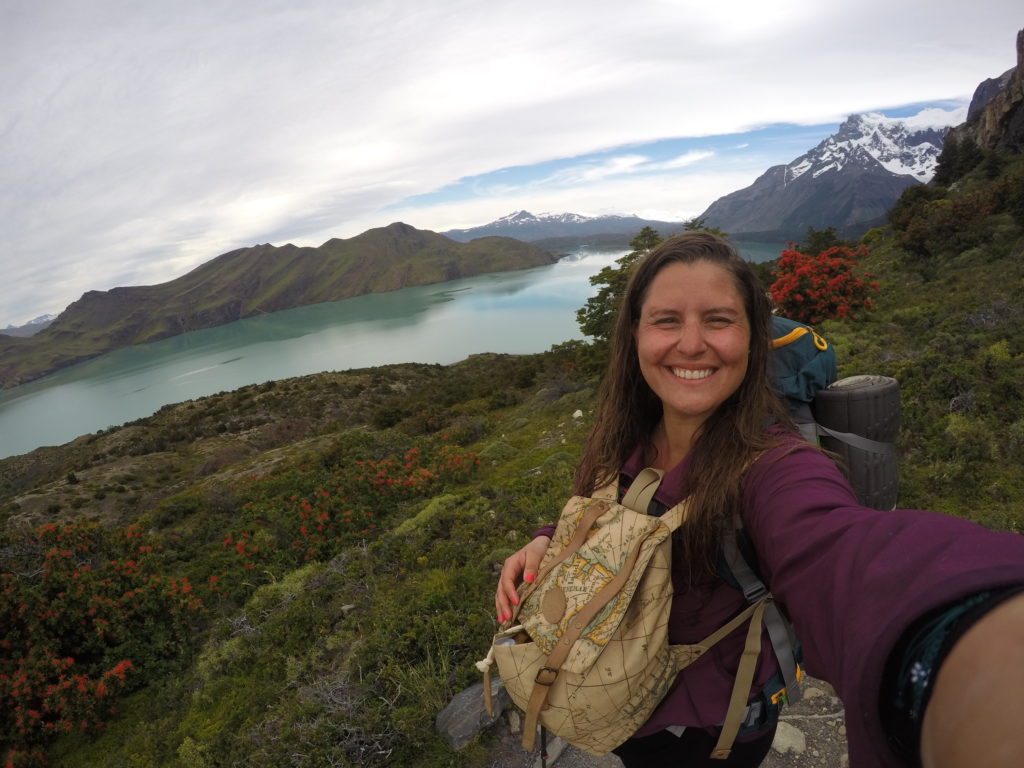
Number 4: Guide or No guide:
I will be the first to say that I’m no expert in trekking, camping, or anything outdoors related but I love the idea of connecting with nature and testing my limits. I would call myself averagely fit but my never-ending positive energy is my greatest strength when it comes to taking this hike on.
It’s important to know your limits. Along the trail, you’ll never be alone even if you go to the park alone. You’ll always run into someone in case you need help or just someone to chat with for a couple of minutes. The trail is also pretty clearly marked. I would say that the only place where I had a hard time reading the signs was when I was in the Fantastico Sur part of the Park.
If you were interested in learning about the wildlife and history of the park, then I would go with a guide. I would recommend with my eyes closed to hike with guys from Trekking.cl. This is there 9th season of working in the park and they have an incredible network of agencies, hotels, transportation that are available for support and offering the best price in town.
Number 5: Remember Where You Are
Torres del Paine or the Patagonia area, in general, is in a very remote part of the world and the weather is extremely unpredictable. Connectivity to your global social media world will be limited and so will charging stations for your cameras and electronics. Take a battery pack with you. Most hostels or hotels in Puerto Natales will offer tents, sleeping bags, kitchenettes and gas for rent at very affordable prices. Don’t worry about lugging that stuff around unless you’re going to use it during your entire trip. You can also buy all your food in Puerto Natales. I spent approx. 26.000 CLP ($50 USD) for two people to eat for 3 full days. Not bad right?
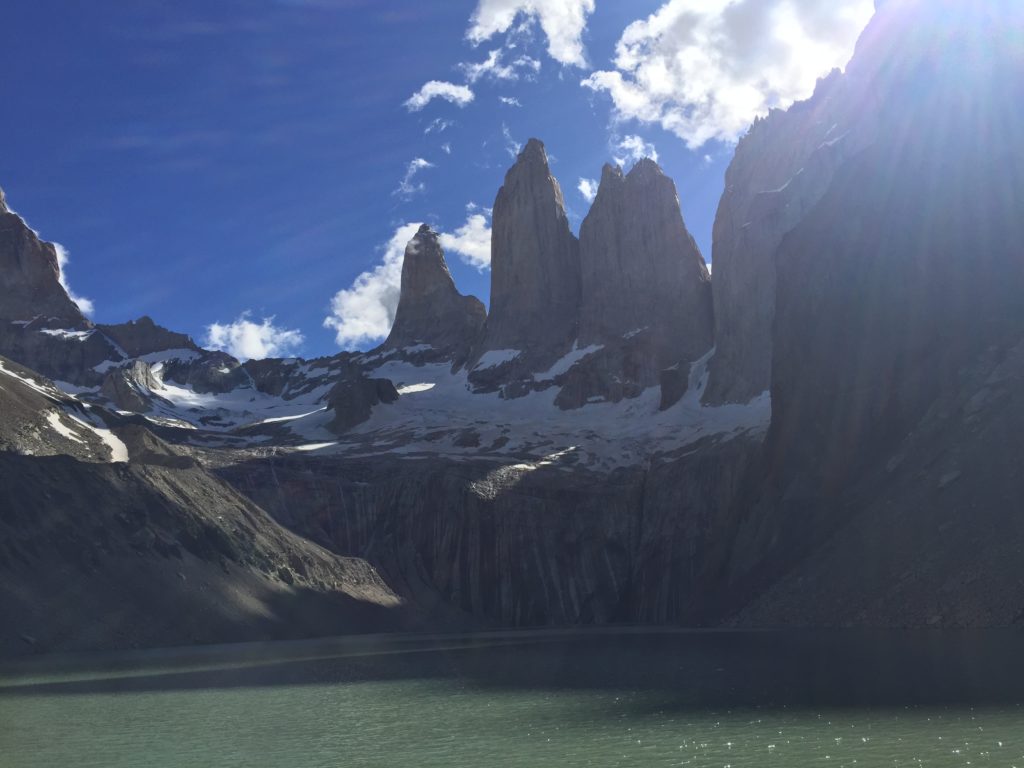
Last but not least, please take care of the park. Take your trash with you. Try to use the same water bottle and refill them up with the river water along the trail. Yes, it’s safe to drink. You’ll see signs repeatedly telling you not to start a fire. Don’t do it. In 2011, 40,000 acres of the park was burned due to a result of a tourist’s irresponsible conduct. You’ll see what is left over when you’re walking between glacier grey and the French Valley.
I hope this information was helpful in your planning of Torres del Paine. Remember that Torres del Paine isn’t the only thing you can do near Puerto Natales. There are a number of alternative hikes and things you can do in the area. Check out my friend’s blog Patagonia dreaming who lives in Puerto Natales and has a number of posts about things to do in the area.
Remember when you give good, you get good.
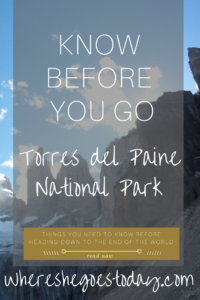

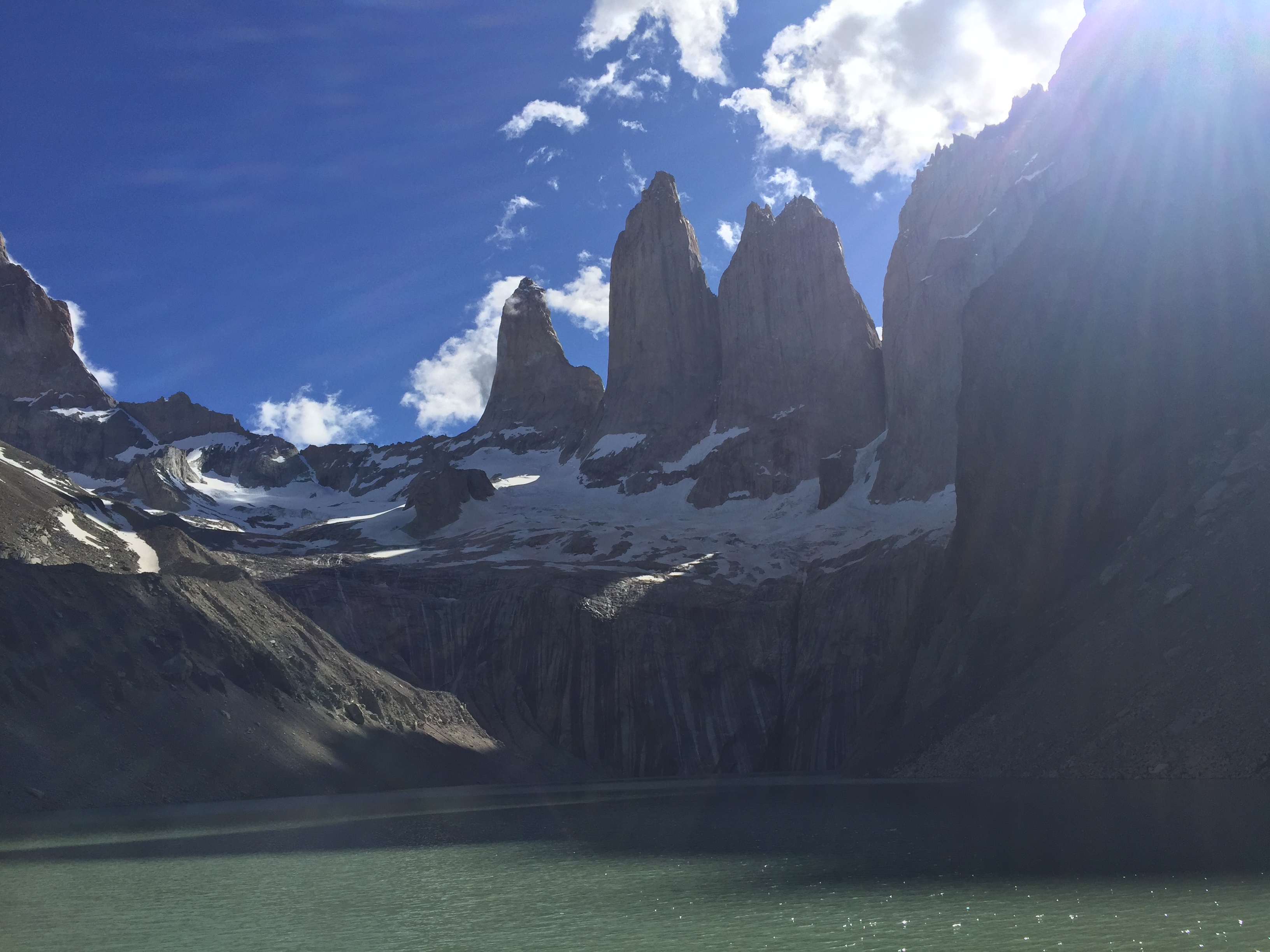
2 comments
Hi have just found this site, It’s really useful. My husband and I will have 10 weeks in Argentina and chile next January. I see you stayed in Castro for 2 nights. We have 3 nights here with a night in puerto Montt either side. Where would you recommend to stay for third night.? Planning Torres del Paine sounds more complicated than we realised. We intend to do day treks
hi there! I went back to Chiloe for the 3rd time and I would definitely recommend going to Lemuy Island. It’s so beautiful, located close to Castro. I stayed at Casa Pindal and they treated me like family! As for Puerto Montt, it’s not the nicest city in the region. I’d definitely try to switch it up and stay in Puerto Varas, which is really close! Torres del Paine is complicated but not impossible! I’d love to chat about your stay there, maybe I can help!
demais este conteúdo. Gostei bastante. Aproveitem e vejam este conteúdo. informações, novidades e muito mais. Não deixem de acessar para saber mais. Obrigado a todos e até a próxima. 🙂